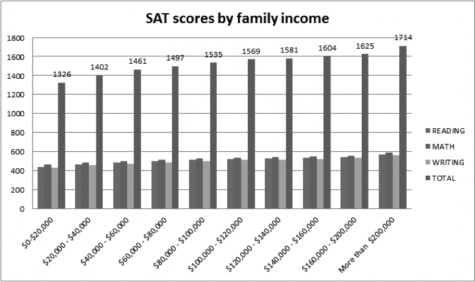May 18, 2017
As the school year comes to a close, juniors anxiously wait for their SAT test scores to be published online. These are the scores that will determine the futures of many; however, the weight of importance that many place upon these scores is not fair to or healthy for students.
The problems with an educational system that is so heavily focused on standardized testing begin before the school year even starts. Teachers, under immense pressure from school district officials, begin to shape their curriculum to better fit the content of the tests.
This practice is commonly known as “teaching the test.”
Leading up to the testing date, students are under a large amount of pressure to score well so they can get into their college of choice, but this is not fair to the students. The test is standardized throughout the country, meaning that if students from Maine and California want to do well on the test, then they must master the same set of skills.
However, curriculum throughout the country is not standardized, which means that students are not learning the same set of skills. Therefore, students will from one area may perform poorly on a test simply because their school district has a different curriculum.
Not only is curriculum different in each school district, but so is how much money schools receive. Schools with more funding have resources that will better prepare students than their poorer counterparts.
The amount of funding that public schools receive is determined by the taxes of citizens and businesses residing in the district. This means that students from wealthier families, and therefore school districts, tend to do better on standardized tests. The College Board released an infographic that shows directrelationship between SAT scores and family income.

Some argue that standardized testing offers teachers and parents an opportunity to see how their child has progressed over a period of time; however, a single six-hour test can not properly measure a student’s ability. Other factors, such as a student’s sleep or mood, can drastically affect how well a student performs on a test.
While standardized testing will most likely never go away, the negative effects far outweigh any benefits. Therefore, college admission officers and school district officials should not place as much weight upon them as they usually do.


